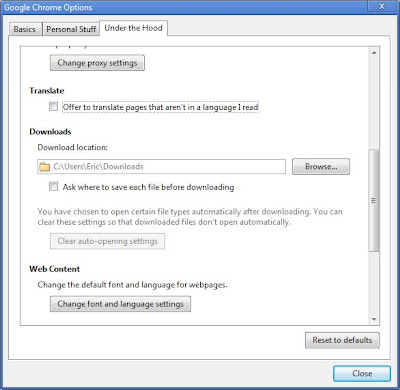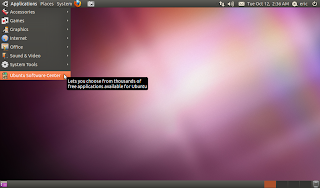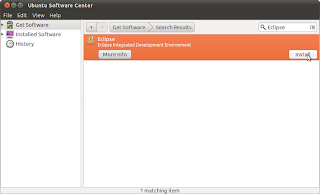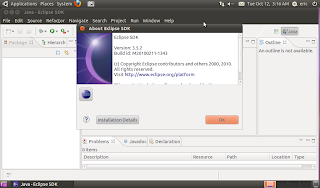MeeGo 1.1. is announced. It provides a solid baseline for device vendors and developers to start creating software for various device categories on Intel Atom* and ARMv7 architectures.


http://meego.com/


The Linux Programming Interface is the definitive guide to the Linux and UNIX programming interface—the interface employed by nearly every application that runs on a Linux or UNIX system.
In this authoritative work, Linux programming expert Michael Kerrisk provides detailed descriptions of the system calls and library functions that you need in order to master the craft of system programming, and accompanies his explanations with clear, complete example programs.
You'll find descriptions of over 500 system calls and library functions, and more than 200 example programs, 88 tables, and 115 diagrams. You'll learn how to:
While The Linux Programming Interface covers a wealth of Linux-specific features, including epoll, inotify, and the /proc file system, its emphasis on UNIX standards (POSIX.1-2001/SUSv3 and POSIX.1-2008/SUSv4) makes it equally valuable to programmers working on other UNIX platforms.
The Linux Programming Interface is the most comprehensive single-volume work on the Linux and UNIX programming interface, and a book that's destined to become a new classic.
 on the browser toolbar. Mac users: If you don't see the wrench icon, go to the menu bar at the top of your screen and click Chrome.
on the browser toolbar. Mac users: If you don't see the wrench icon, go to the menu bar at the top of your screen and click Chrome.

Linux Creator Linus Torvalds Honored by NEC C&C Foundation
Torvalds to receive one of the world’s most prestigious awards for contributions to computer technologies and their social impact






Debian is a free operating system (OS) for your computer. An operating system is the set of basic programs and utilities that make your computer run. Debian uses the Linux kernel (the core of an operating system), but most of the basic OS tools come from the GNU project; hence the name GNU/Linux.
Debian GNU/Linux provides more than a pure OS: it comes with over 25000 packages, precompiled software bundled up in a nice format for easy installation on your machine.
Debian GNU/Linux 5.0.6 was released September 4th, 2010. The release included many major changes, described in our press release and the Release Notes.
To obtain and install Debian GNU/Linux, see the installation information page and the Installation Guide. To upgrade from an older Debian release, see the instructions in the Release Notes.
GIMP is an acronym for GNU Image Manipulation Program. It is a freely distributed program for such tasks as photo retouching, image composition and image authoring.
It has many capabilities. It can be used as a simple paint program, an expert quality photo retouching program, an online batch processing system, a mass production image renderer, an image format converter, etc.






ArchBang is a simple GNU/Linux distribution which provides you with a lightweight Arch Linux system combined with the Openbox Window Manager.
Suitable for both desktop and portable systems – It is fast, stable, and always up to date.
You can customise your install to suit your needs, and draw on the vast resources & knowledge of the Arch Linux community.
The download page has links to both 32 & 64 bit versions, bootable as a live CD / USB – allowing you to easily test it out before doing a full install.
A regular installation of Ubuntu uses the GNOME desktop, GTK+/GNOME applications and packages (e.g. Evolution), and GTK+/GNOME-based admin tools (e.g. Synaptic Package Manager). In contrast, a regular installation of Kubuntu uses KDE's plasma desktop, KDE/Qt applications and packages (e.g. Kontact), and KDE/Qt admin tools (e.g. KPackageKit). Nevertheless, Kubuntu users can install and use any GNOME/GTK-based package that is available in the Ubuntu repositories, and Ubuntu/GNOME users similarly can install and use any KDE/Qt-based package. One may install Ubuntu and then add the KDE Software Compilation, for example, or can install the entire Kubuntu desktop 'metapackage' on top of Ubuntu. (There is a slight disadvantage to installing and using both the GNOME desktop and the KDE plasma desktop, however, namely the increased diskspace and memory requirements of running both GTK/GNOME and Qt/KDE.)
The Kubuntu desktop is fully customizable. Originally designed to ease transition for users from other operating systems (such as Microsoft Windows) by allowing a similar desktop layout, the KDE Plasma Desktop incorporates widget-centric modularity that allows the user to incorporate function similar to all other operating systems and also create new functionality not found in other operating system desktops. 3-D effects are available in the standard KDE SC 4 installation.
Source: Kubuntu - Wikipedia
Kubuntu is a community developed and supported project. Since its launch in October 2004, Kubuntu has become one of the most highly regarded Linux distributions with millions of users around the world.
Kubuntu will always be free to download, free to use and free to distribute to others. With these goals in mind, Kubuntu aims to be the most widely used Linux system, and is the centre of a global open source software ecosystem.
Take the tour and find out why Kubuntu is right for you.
Kubuntu is based on free software from many communities of developers including: KDE Software, applications that give you power
Plasma, KDE's desktop and netbook workspaces
Linux, an operating system kernel taking over the world
Debian, supply most of our packages
Ubuntu, turning free software into distributions such as Kubuntu
Google Gadgets for Linux (google-gadgets-for-linux) provides a platform for running desktop gadgets under Linux, catering to the unique needs of Linux users. It's compatible with the gadgets written for Google Desktop for Windows as well as the Universal Gadgets on iGoogle. Following Linux norms, this project is open-sourced under the Apache License.
An important area where Google Desktop for Linux is different from its siblings on other operating systems is support for gadgets. Now, the Linux version of Google Gadgets will extend the gadgets platform to Linux users. By enabling cross-platform gadgets, a large library of existing gadgets are immediately available to Linux users. In addition, gadget developers will benefit from a much larger potential user base without having to learn a new API.
KAlarm is a personal alarm message, command and email scheduler for Linux and Unix.
You can schedule alarm messages to pop up on the screen (with sound if desired), or you can schedule audio to play, commands to execute or emails to send.
Packages on the official CRUX ISO image are compiled with optimization for i686 (Pentium-Pro/Celeron/Pentium-II or better) processors. Do not try to install it on an i586 (Pentium, AMD K6/K6-II/K6-III) or lower processor, since it simply will not work. To install CRUX on an i586 system you need to download the i586 version of the CRUX ISO image.
A minimum of 160MB system memory is required to install CRUX from CD-ROM. It is possible to perform a custom chroot installation with only 16MB of RAM.
$cat /proc/cpuinfo

$sudo apt-get install cpuid
The vision is to have Qt Everywhere and to enable you to create advanced applications with innovative user experiences while getting to market quickly.Platforms: Embedded Linux, Mac OSX, Windows, Linux/X11, Windows Mobile, Windows CE, Symbian, Maemo and MeeGo.